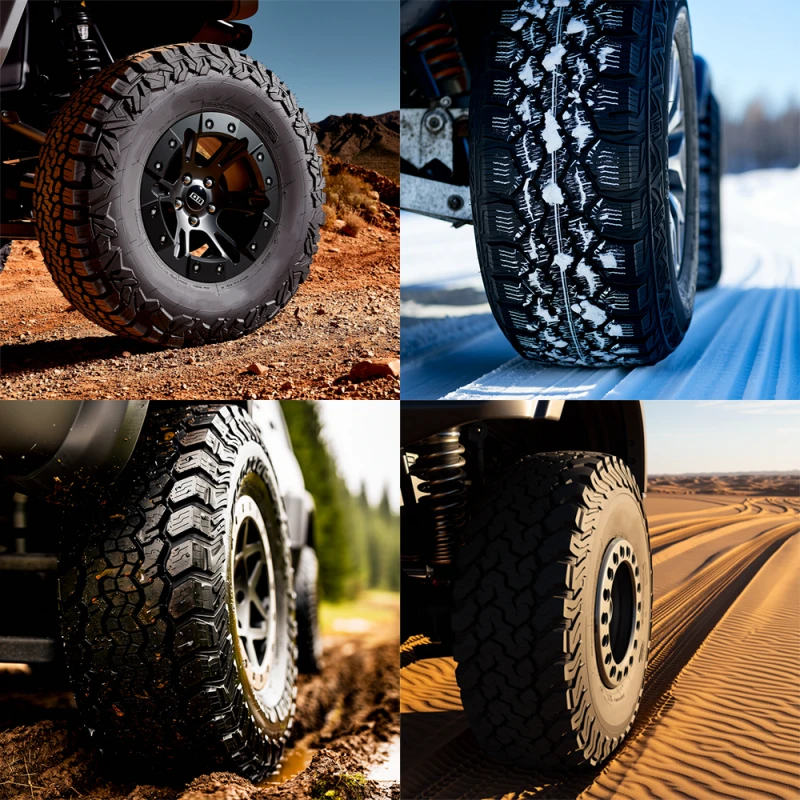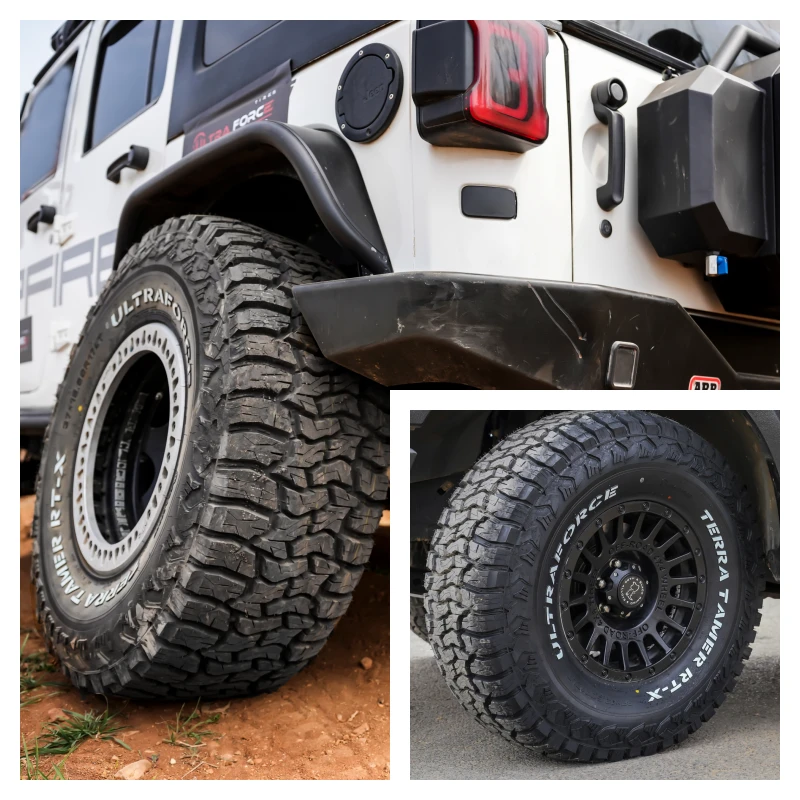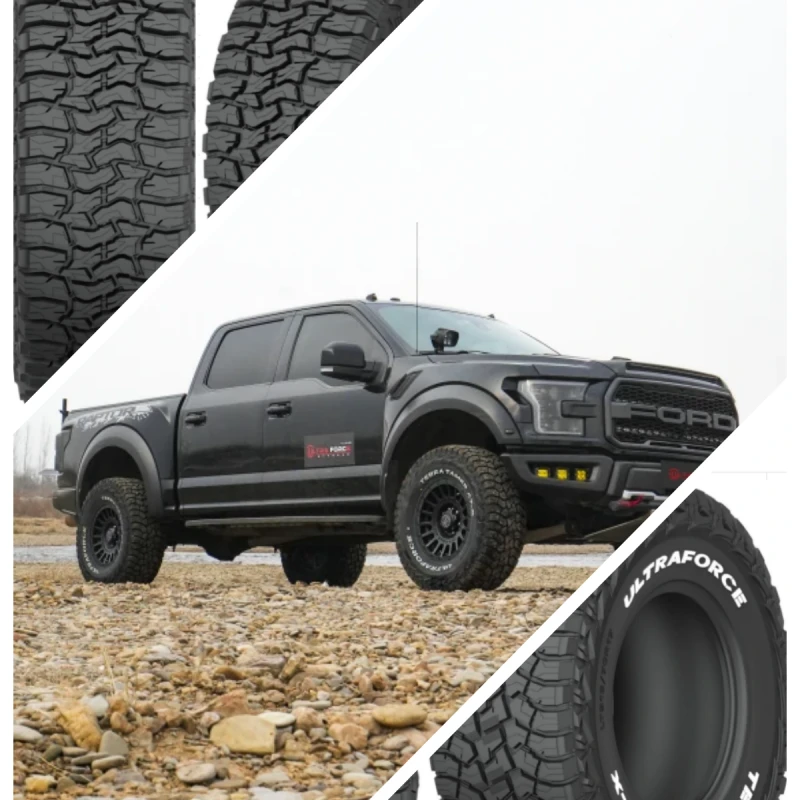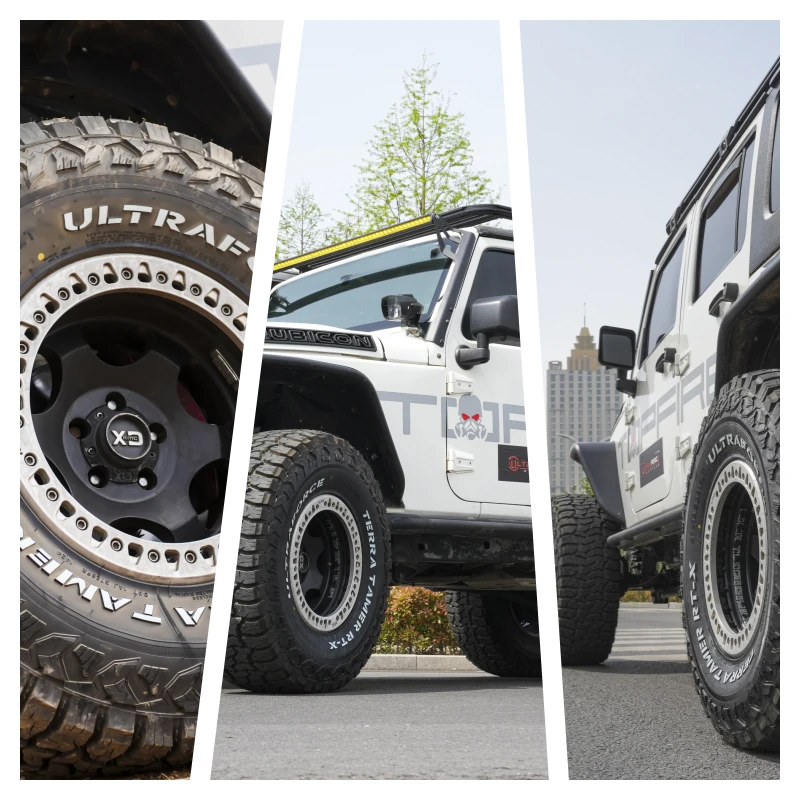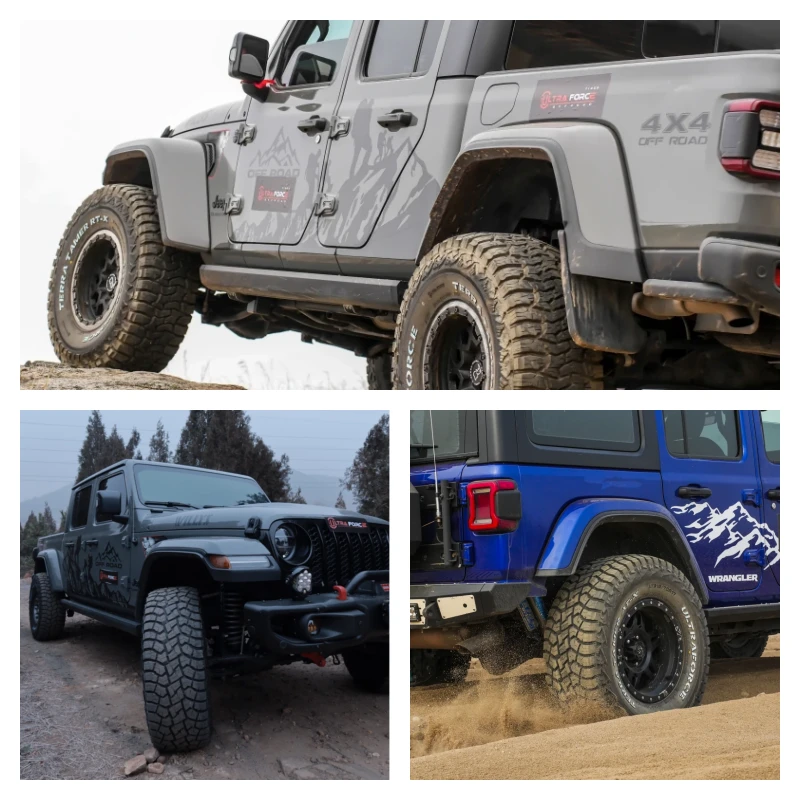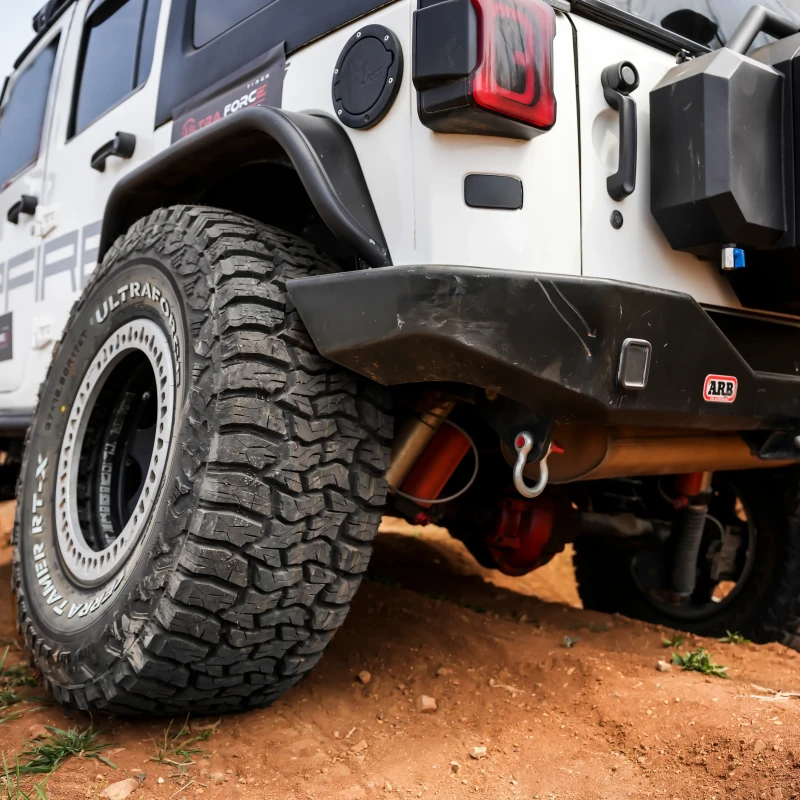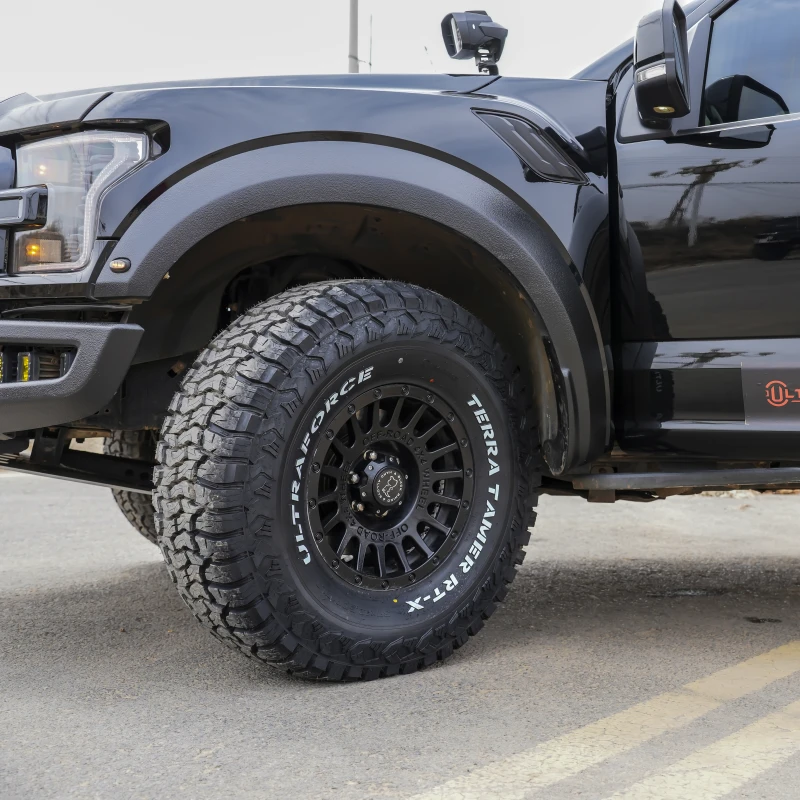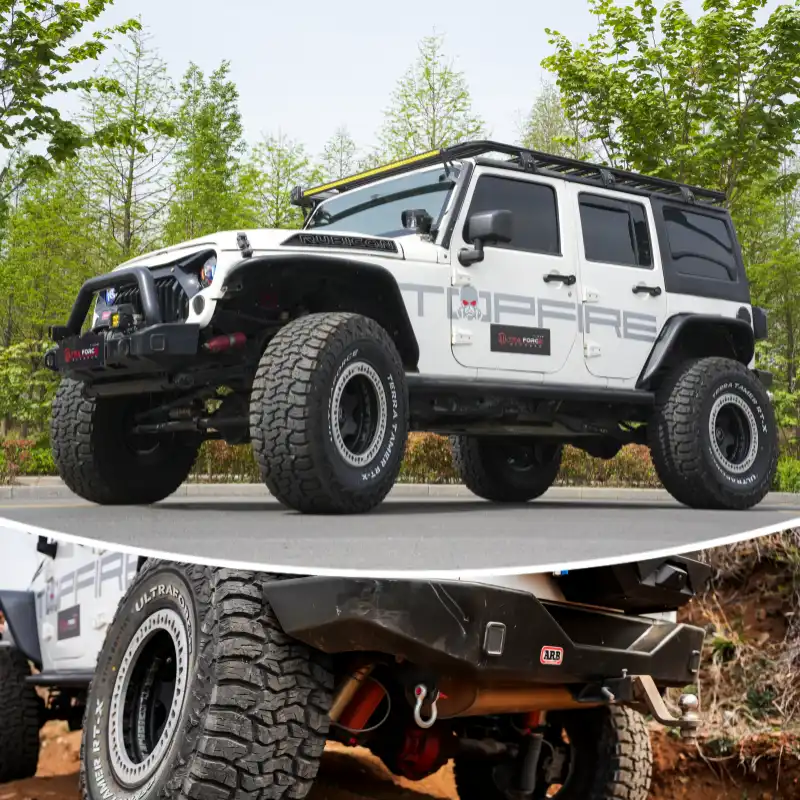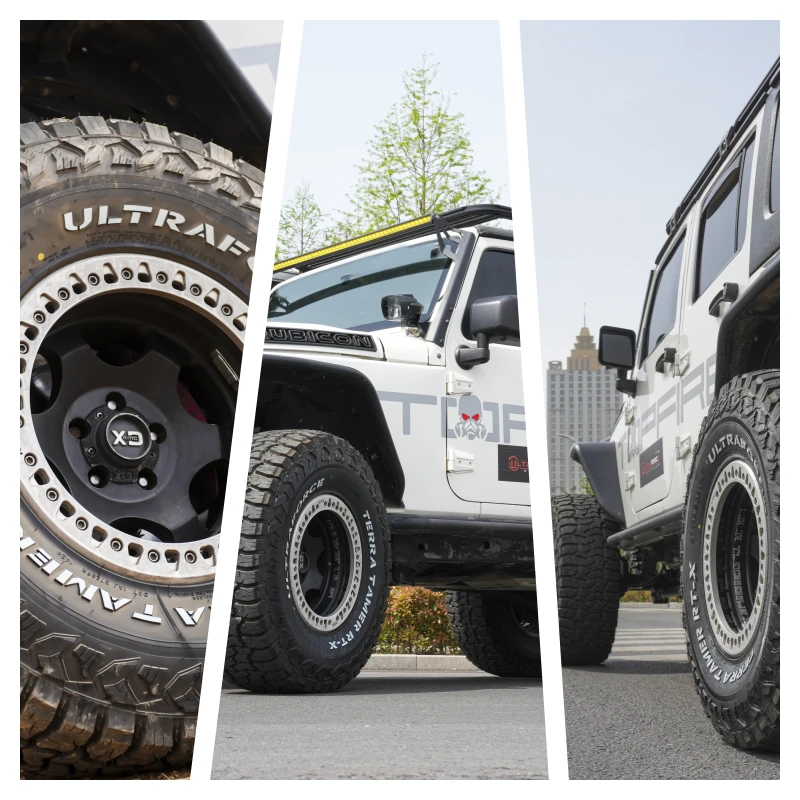When it comes to conquering the untamed paths of nature, few things matter more than your off-road tire pressure settings. Sure, horsepower and suspension sound flashy, but real trail veterans know — it's all about how your tires meet the earth. Get it right, and you glide over dunes like a phantom; get it wrong, and you might be digging yourself out of the mud for hours.
In this article, we'll navigate the labyrinth of proper tire pressure settings across a wide variety of terrains, and we’ll anchor our exploration with real-world data, practical tips, and a closer look at how industry leaders like UltraForce Tires are setting new benchmarks for off-road excellence.
Why Tire Pressure Matters Off-Road
At first glance, adjusting tire pressure might seem like just another box to check before a trip. In reality, it fundamentally changes how your vehicle behaves.
Lowering tire pressure increases the tire’s "contact patch" — that is, the amount of tire surface touching the ground. A larger patch offers better grip, more flotation over soft surfaces like sand, and shock absorption over jagged rocks. Conversely, too low pressure can lead to sidewall damage or even tire de-beading.
Here’s a simple overview:
| Tire Pressure | Effect |
|---|---|
| High Pressure (30+ PSI) | Reduced contact area, better for hard-packed roads |
| Medium Pressure (20-30 PSI) | Balanced performance on mixed surfaces |
| Low Pressure (10-20 PSI) | Maximum traction for soft or uneven terrain |
| Extremely Low (<10 PSI) | Specialized use only (e.g., rock crawling with beadlock wheels) |
So, how low should you go? The answer depends on where you're headed.
Sand: Float Like a Butterfly, Drive Like a Dream
Sand dunes and beaches demand delicacy. With soft sand, your tires need to "float" rather than dig.
Recommended Tire Pressure: 12–16 PSI
A 2018 study by the Off-Road Vehicle Research Association (OVRA) found that vehicles operating at 14 PSI had 28% less rolling resistance in dune environments compared to vehicles at 30 PSI. Lowering the pressure prevents the tires from cutting into the sand, helping you stay atop the surface.
| Terrain | Optimal PSI | Speed Caution |
|---|---|---|
| Fine Dry Sand | 12–14 PSI | Moderate; avoid high speeds |
| Wet Beach Sand | 14–16 PSI | Slightly firmer; easier traction |
Pro Tip: Always reduce speed when running low pressures. High speed + low PSI = a recipe for catastrophic tire failure.
And speaking of confidence, this is where UltraForce Tires truly shines. Our specialty off-road tires, like the UltraForce TerraCruze S1, are engineered with reinforced sidewalls specifically designed to thrive even when pressures drop drastically.
Rocks and Technical Trails: Grip or Rip
Crawling over rocks isn't about speed — it's about control and traction. Precision is king.
Recommended Tire Pressure: 12–20 PSI
According to a 2020 study in Trail Mechanics Quarterly, vehicles operating between 14–18 PSI on rocky trails had 35% improved surface adherence compared to vehicles at street pressures. Lower pressures allow the tire to deform around rocks, creating a claw-like effect.
| Rock Type | Suggested PSI Range | Notes |
|---|---|---|
| Sharp Rocks | 15–18 PSI | Protect sidewalls |
| Smooth Boulders | 12–16 PSI | Maximize grip and flex |
While 12 PSI sounds great for grip, it's important to remember: the lower you go, the more vulnerable your sidewalls become. Brands like UltraForce Tires address this balancing act through advanced tread compounds and sidewall technologies that provide the "bend without break" flexibility you desperately need.
Mud: Tread Lightly, Sink Heavily (If You're Not Careful)
Mud is deceiving — it looks soft, but it can be viciously sticky or bottomless. The goal here is a compromise between flotation and self-cleaning.
Recommended Tire Pressure: 15–20 PSI
Why not lower? Because mud demands tire spin to self-clean (fling mud from the tread), and spinning at super low PSI can risk de-beading the tire.
A 2021 field report from the All-Terrain Institute recorded 23% fewer bog-down incidents when vehicles operated at 17–19 PSI in deep, wet mud compared to those at lower than 15 PSI.
| Mud Type | Optimal PSI | Recovery Caution |
|---|---|---|
| Thin Sloppy Mud | 18–20 PSI | Watch for hydroplaning effect |
| Thick Sticky Mud | 15–18 PSI | Maximize tread evacuation |
UltraForce’s Mud Ripper M/T series, for example, features high-void tread patterns that actively self-clean at moderate RPMs, while their flexible carcass designs allow for slight PSI reductions without risking structural integrity.
Snow and Ice: Tiptoeing Over Treachery
Snow is sand’s colder cousin — with similar demands for "flotation" but unique dangers like ice underneath.
Recommended Tire Pressure: 16–22 PSI
Fluffy powder snow responds well to lower pressures, but hard-packed snow and ice might require higher pressures for cutting into the surface. A U.S. Forest Service study noted that vehicles adjusted to 16 PSI in deep snow had 42% improved forward momentum over stock PSI settings.
| Snow Type | Recommended PSI | Key Concern |
|---|---|---|
| Deep Powder | 16–18 PSI | Maximize flotation |
| Hard-Pack/Icy | 20–22 PSI | Maintain edge biting |
Side Note: Carry an air compressor! Terrain changes fast; your tire pressure must too.
UltraForce Tires' cold-weather formulations retain elasticity at sub-zero temperatures — another subtle yet critical advantage when off-roading in winter.
Practical Tips: Adjusting and Managing Pressure On The Fly
Use a quality deflator tool: Precision saves tires.
Don’t forget the spare: Match its pressure to your adjusted tires.
Reinflate as needed: Transitioning back to highways? Bring tires back up to recommended street pressures (~30–35 PSI).
The Future of Off-Road Tire Technology: How UltraForce Tires is Innovating
It's tempting to think off-road tires have "peaked" — but not at UltraForce Tires.
We’re continuously investing in new compound technologies that allow ultra-low-pressure operation without sidewall fatigue. Our tread designs are not merely "aggressive-looking"; they are computer-optimized to deform predictably under various loads and conditions, ensuring that when you air down for sand, rocks, mud, or snow, you’re not gambling — you’re strategizing.
Moreover, through customer-focused customizations (yes, that includes bespoke sidewall and tread designs), we empower off-road enthusiasts and businesses alike to tailor their tire choices exactly to their environments and aspirations.
Because for us at UltraForce, the road less traveled isn’t just a slogan — it’s the only road worth taking.
Conclusion: Know Your Terrain, Trust Your Tires
Mastering off-road tire pressure settings for different terrains isn't just about knowing numbers — it’s about understanding the dance between machine, rubber, and earth. Each terrain whispers its own secrets; you just have to be ready to listen — and to deflate or inflate accordingly.
And remember: with UltraForce Tires as your trusted companion, you don’t just adapt to the terrain — you dominate it.
Whether you're floating over sun-baked dunes, tiptoeing across winter wonderlands, clawing up ragged cliffs, or slogging through bottomless bogs, the right tire pressure — and the right tire — can be the thin line between legend and lament.
